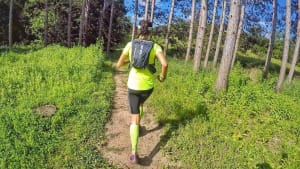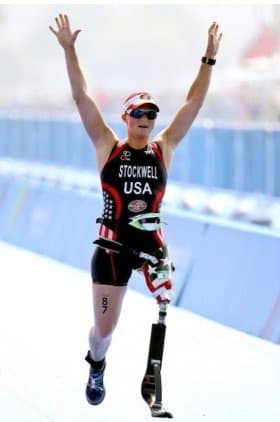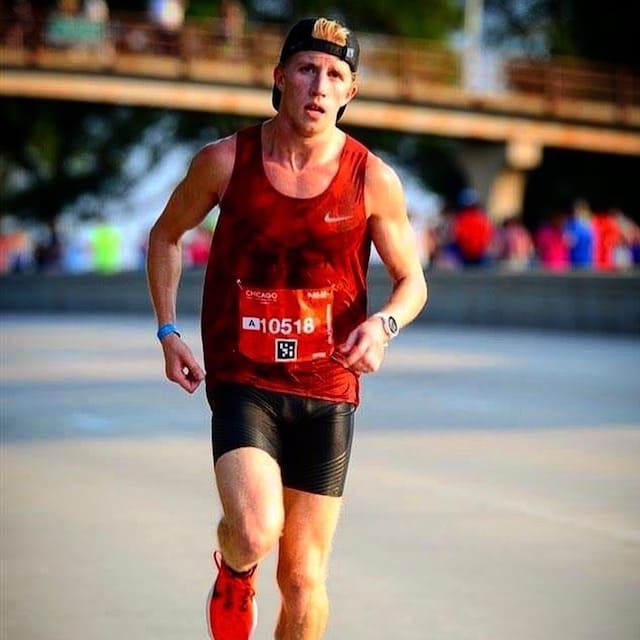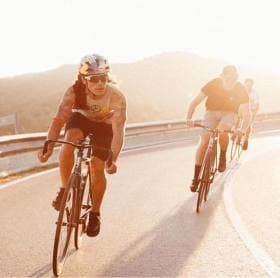
Fall is a runner’s paradise. The cooler temperatures, the bright changing leaves, and crisp air all practically beg us to go outside for a run. Most goal races have come and gone and off-season is here. It’s a great time of year to use the fitness you’ve built up over the summer to try something new. Enjoy the weather and explore new locations with trail running!
Trail running has a number of benefits that can translate to improved road fitness. Trail running has softer surfaces, which can lead to fewer injuries. Most trails are hilly, which can improve power, strength and speed. Technical trails also work more stabilizing muscles and fast footwork that running on road.
For me, the mental break and incredible trail running community keeps me coming back. Trail running is a way to immerse yourself in nature, forget about pace and just run!
Here are 5 top trail running tips to help you go from asphalt to dirt paths this fall:
1. Trail Etiquette
There are two types of trails, single-track and multi-track. Single-track means the trail is the width of only one bike. Multi-track means two or more bikes can fit across. Whether you are on single track or multi-track trails, runners yield to bikers and horseback riders. Step slightly off the trail if needed to let them pass. Downhill runners also have the right of way (hi there, Gravity).
When running in a group, leave at least 5 yards between you and next runner. That way if the person in front trips and falls, you won’t accidentally step on them or fall yourself!
On a group run, call out “Bike up” if a bike is coming towards your party, or “Bike back” if bikers are trying to pass your party. It’s common practice to announce how many people are in your group. For example, if I were the lead runner in a group of three, I would say, “Two back” so that the bikers know how many more people to expect. If I were the last person, I would say “Last one” so the bikers know the path is clear.
2. Lace Up
Trail shoes are different than road shoes. Trail shoes are traditionally heavier, with deeper treads that provide more grip and traction. The soles of trail shoes are also more durable, designed to protect against roots, rocks and other rugged terrain.
For the trails around Illinois, you can typically get away with using road shoes on multi-track trails (Waterfall Glenn, Swallow Cliff main trail, the yellow loop at Maple Lake). Multi-track trails are usually crushed gravel paths that road shoes can handle. However, you would need specific trail shoes for single-track trails or inclement weather days.
3. Effort Not Pace
Due to the hills, varied terrains, and occasional obstacles, trail running can be a lot more demanding than road running. Focus on running by effort instead of by a specific pace. Slow down and enjoy being out in nature, going at a relaxed trail tempo instead of comparing your pace to road.
For newer runners, I recommend running for a certain time instead of a specific distance. Your body is working a lot harder than it does on road. All those stabilizing muscles have to work more to keep you balanced, and the changing terrain means constantly changing paces.
4. Respect the Environment
Leave the trails better than you found them. If you eat a gel or other nutrition product, keep the wrappers until you find a trashcan. If you see wildlife, remember that you are in their home! Keeping the trails clean and safe will make them last longer.
5. Carry Fluids
Out on the trails, there are no water fountains. Carry your own fluids! Your body works harder and you will probably need to drink more than on road. I recommend a hydration pack that has capacity for water bottles, or room for a water bladder. Lots of packs also have pockets where you can carry food, keys, phone, or an extra clothing layer.
Overall, trail running is a great way to get off road and in to nature. You’ll gain both physical and mental benefits that will help improve road fitness too! If you want to test your trail legs in a fun relaxed atmosphere, join EDGE at the Flying Pug Race on October 28th.



